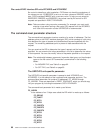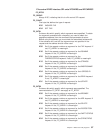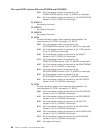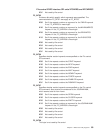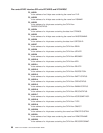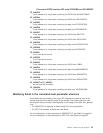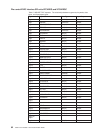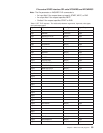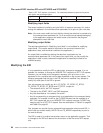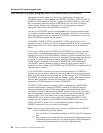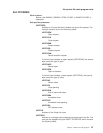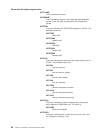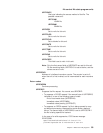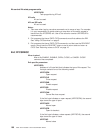
Table 6. SET FILE requests (continued). The relationship between arguments, keywords,
data types, and input/output types.
Argument Keyword Data Type Input/Output
Arg36 RLSACCESS BIN(31) Input
Modifying input fields
The correct method of modifying an input field is to create a new copy of it, and to
change the address in the command-level parameter list to point to your new data.
Note: You must never modify an input field by altering the data that is pointed to by
the command-level parameter list. To do so would corrupt storage belonging
to the application program and would cause a failure when the program
attempted to reuse the field.
Modifying output fields
The technique described in “Modifying input fields” is not suitable for modifying
output fields. (The results would be returned to the new area instead of the
application’s area, and would be invisible to the application.)
An output field is modified by altering the data that is pointed to by the
command-level parameter list. In the case of an output field, you can modify the
application’s data in place, because the application is expecting the field to be
modified anyway.
Modifying the EID
It is not possible to modify the EID to make major changes to requests. It is not
possible, for example, to change an INQUIRE FILE request to a SET FILE request.
However, you can make minor changes to requests, such as to turn on the
existence bit for a variable that had not been specified on the current request. The
following paragraph lists the bits in the EID that can be modified. Any attempt to
modify any other part of the EID is ignored.
Your exit program can modify any bit in FC_BITS1, FC_BITS2, FC_BITS3,
FC_BITS4, FC_BITS5, FC_BITS6 and FC_BITS7,
except for
:
v The existence bit for the FILE keyword.
v The bits for the START, NEXT, and END keywords.
v Any bits described as “not used by file control”.
v Any bit corresponding to a keyword that is not applicable to the command being
executed. For example, the bit for the CLOSED keyword can be modified on a
SET FILE request but not on an INQUIRE FILE request, because CLOSED has
meaning only for a SET FILE request. See the descriptions in Table 5 on page 92
and Table 6 on page 93.
Your program can provide its own command-level parameter structure and EID, in
which case you should modify UEPCLPS and TS_ADDR0 respectively to point to
the new structures.
The EID is reset to its original value before return to the application program. That
is, changes to the EID are retained for the duration of the file control SPI request
only.
File control EXEC interface SPI exits XFCAREQ and XFCAREQC
94
CICS TS for OS/390: CICS Customization Guide



